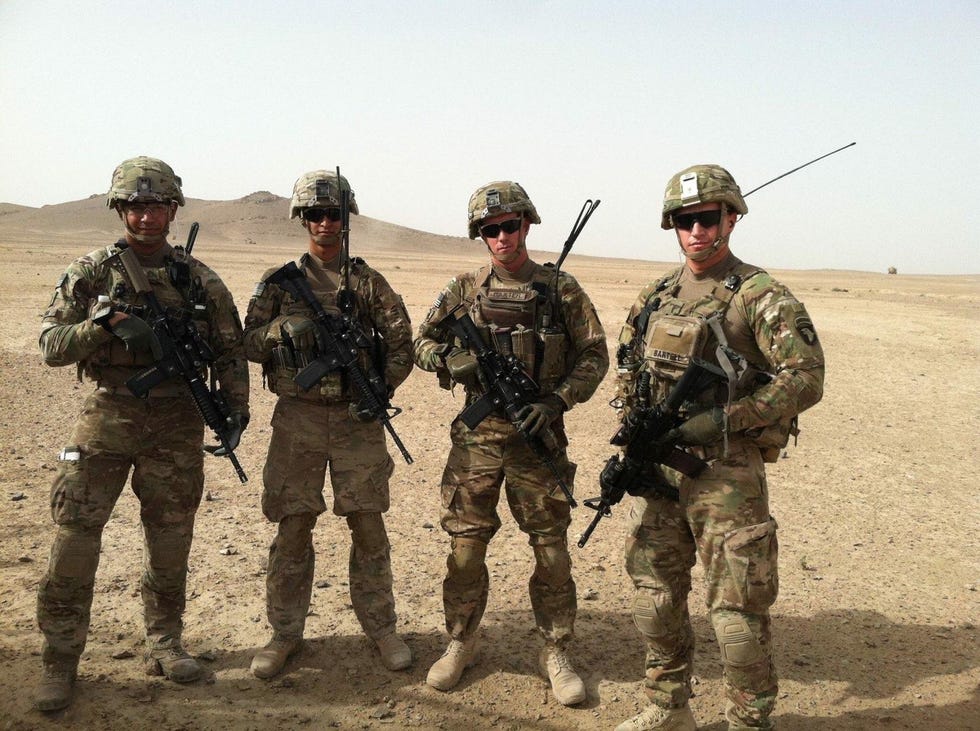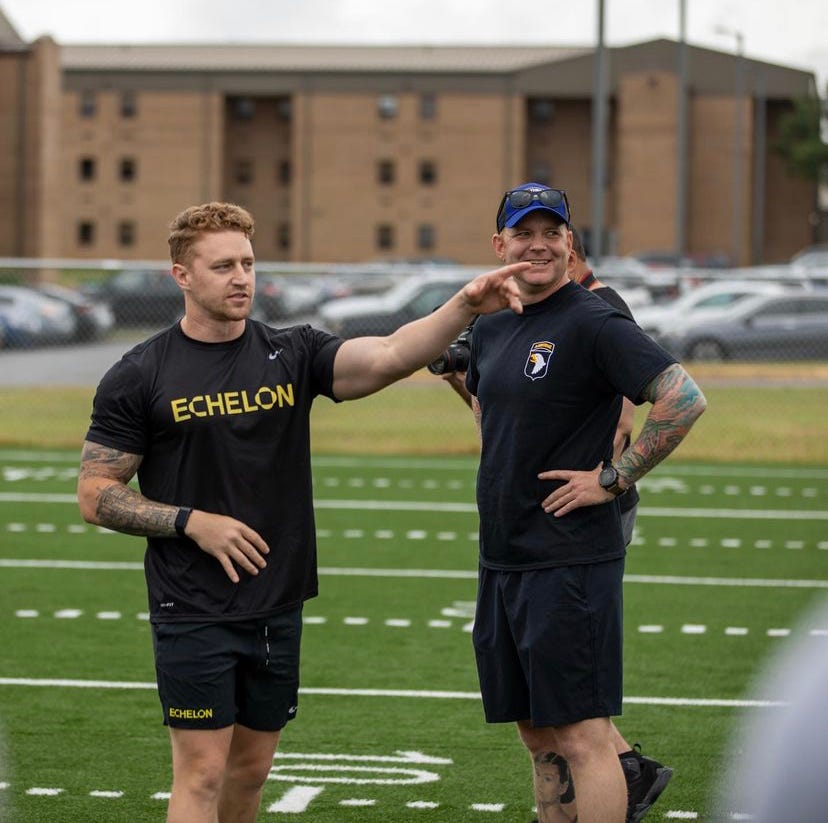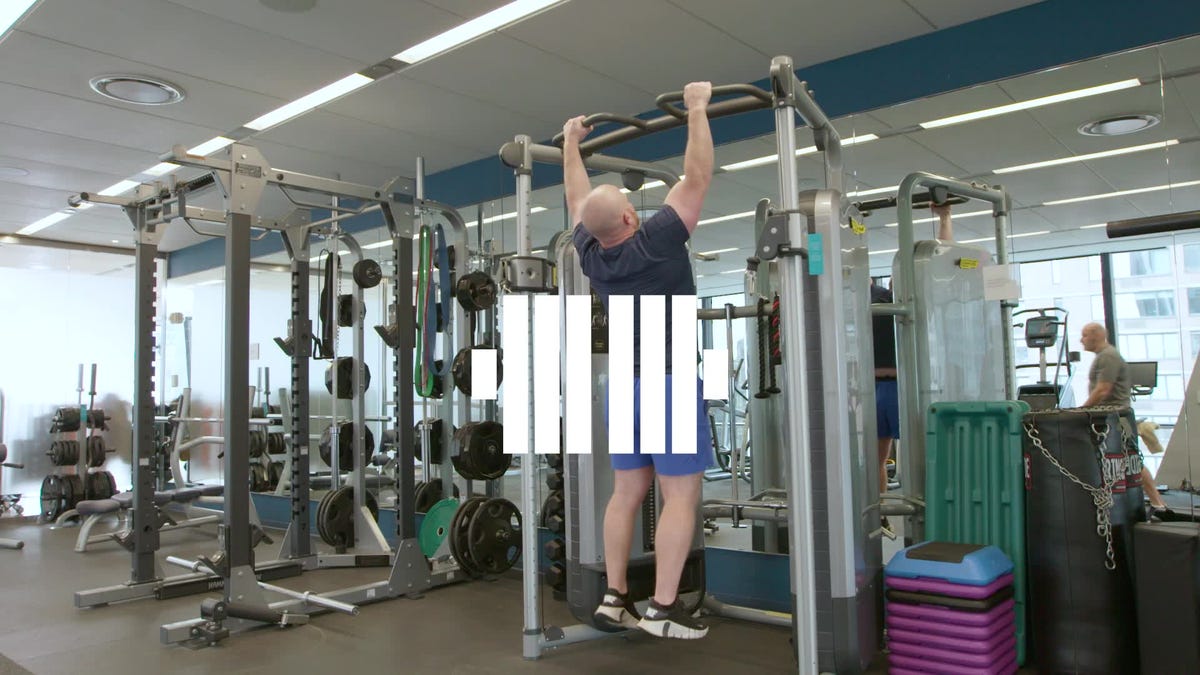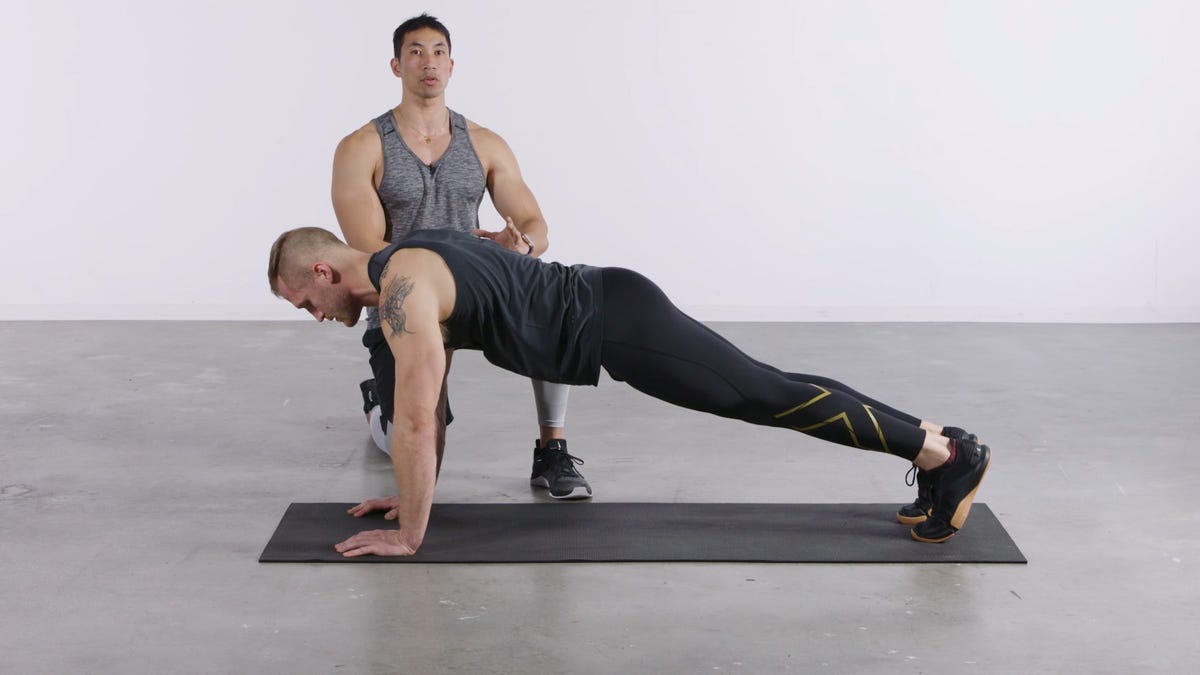MEMORIAL DAY REPRESENTS the start of summer for most people around the U.S. The holiday is an opportunity to kick back and relax, maybe even gathering with family and friends around a grill to welcome in the new season and enjoy a long weekend away from work. If you’re a certain type of fitness fanatic, however, the holiday provides the opportunity for the exact opposite scenario: hard work in the form of one of the toughest workout challenges accessible to the masses. Memorial Day is Murph day, and that means pushing yourself to the limit to recognize the reason the holiday is observed every year.
Whether you take on the Murph workout with your friends or gym community at a CrossFit box, working hard to track your time, or you do it on your own, just aiming to eke out every rep, you’ll be participating with a large number of exercisers across the country, from high-level athletes to celebrities working to raise awareness and funds for veteran’s causes. All will perform the same routine (or at least some scaled version of the same routine), creating one big group workout.
But before you decide to dedicate your Memorial Day—or at the very least, your Memorial Day morning—to the Murph, you need to understand exactly what it is you’re doing. The workout is far more than just a series of exercises determined by a random trainer; the Murph has a storied origin that can help to bring even more meaning to the sweat you’ll undoubtedly work up as you strive to finish.
What Is the Murph Workout?
Completing the Murph workout this Memorial Day may not require superheroic strength, but this CrossFit Hero WOD will take a super dose of both stamina and strategy to finish strong.
The routine uses simple, everyday movements—running, pushing, pulling, and lifting—, which were the fitness tools of the Navy SEAL it was named to honor, Lt. Michael P. Murphy. Murphy, who was the workout’s creator, was killed in 2005 on a reconnaissance mission in Afghanistan.
The Murph workout’s simple structure makes it one of the most accessible WODs under the CrossFit umbrella. It consists of:
- 1-mile run
- 100 pullups
- 200 pushups
- 300 squats
- 1-mile run
Making it to the finish line strong, however, can leave even the toughest athletes feeling like they just sprinted a marathon—even without adding a 20-pound weight vest to simulate the body armor worn by Murphy, who dubbed the routine “Body Armor” when he designed it to stay in shape while deployed.
On top of its physical challenge, the significance of the man behind the workout has made the workout a Memorial Day tradition.
How an Army Veteran Prepares for the Murph
Army veteran and trainer Erik Bartell, CPT, prepares himself annually for both the physical challenge and Memorial Day significance the Murph workout has become to the military community. Bartell shares the tips to make crush your Murph as well as what the day means to him. For a more detailed program, check out his formal plan here.
What is the significance of Murph for military veterans?
It’s an emotional experience. The Murph is a small token of sacrifice we can undertake to honor those who have paid the ultimate sacrifice. Many Global War on Terrorism veterans dedicate it to a friend, mentor, sibling who gave it all overseas.
Although the Murph workout specifically honors Mike Murphy, most military members and vets do it in honor of someone they knew.
What’s the atmosphere like during a Memorial Day Murph?
It’s usually supportive and competitive with high esprit de corps. For vets, it takes you back to the days when you were in [the military] and your life revolved around those to your left and your right. Bonds are strong in the military because you live, breathe, sweat—and even bleed—together. No one understands what you’re going through like your squad.
This is never truer than on deployment. You leave the rest of the world behind and go to the other side of the world, where every day could be your last, and all you have is brothers in arms to get you through it. It’s some of the worst and best times of your life. Emotions and adrenaline are high, and you form bonds with what were once complete strangers that could never be replicated.
How was your first Murph experience?
The first time I did the Murph I was in high school. I didn’t even know what it was then. One of the assistant football coaches was really into CrossFit and made the team do it after a two-a-day session. It obliterated most of us.
Fast-forward to when I was in the Army. The Murph became as culturally relevant on Memorial Day as turkey on Thanksgiving. Every year it is a humbling, emotional, and sacred experience that I’m honored to participate in.
For someone who’s never done a Murph, what should they expect?
I like to say the Murph is simple, not easy. It is a great grit test, an opportunity to get outside your comfort zone and see what you’re really made of.
Many people use it as a once-a-year opportunity to push themselves more than usual. And because it is always the same thing, it allows you to also compare where you are fitness-wise to last year.
What is your body going to feel like after finishing Murph?
The Murph is an experience for some, a gritty workout for some, and an annual fitness assessment for some others. It’s you versus you, so if you choose to go all out, you will feel like you just finished a marathon. Many people take it a little more casual, making it more about the experience and camaraderie of doing it with a group. These folks feel accomplished but may have a beer after to celebrate and honor the ones they dedicated the workout to.
How do you break down the training sessions for Murph?
My Murph training prep program currently breaks down with a five-day split:
- Day 1: Tempo run to build 1 mile pace
- Day 2: Focus on pushups
- Day 3: Focus on pullups
- Day 4: Aerobic base conditioning and vest familiarity
- Day 5: Focus on squats
How much time should you set aside for training?
I block off a month to two months in advance based on my schedule and really orient my training around the Murph events of pullups, pushups, squats, and running. But four weeks should be the minimum preparation time for most people.
What are some modifications those not quite Murph-ready can apply and still participate?
The best thing about the Murph is that it is scaleable. Many people do a half-Murph their first time if they don’t feel ready to do the full thing.
I highly recommend partitioning the exercises. What that means is rather than going through all 100 pullups before moving to pushups, break it down into sections and start with 10 pullups and then 20 pushups and so on and then go about it with rounds rather than tackling it all at once.
What are some tips for each portion of Murph?
I like to have most people who train with me partition these into rounds to help make the workout more efficient. For example, after the mile run, I’ll break the routine down to 10 rounds of say, 10 pullups, 20 pushups, and 30 squats.
Running
For the mile runs, I’ll work two to three times per week with different training protocols focusing on speed and endurance. I like to do what I call “30:60s” to prepare for the runs. What that means is 30-second sprints followed by a 60-second jog for a mile and gradually progress each week.
Pullups
The best way to train for doing pullups… is by doing pullups. There are so many reasons why someone struggles with pullups. It may just be strength but oftentimes it could be anything from muscular endurance to grip strength.
The goal for this is to develop muscular endurance. I like to include a strictly pullup-focused workout at least one day out of the week, but also incorporate pull strength and endurance into the other strength training days. The goal is to get people comfortable with doing back-to-back rounds of pullups so that on the day of the Murph it is not going to be a shock to the body or mind when they have to push through the discomfort.
Pushups
Week over week I like to add volume to get you comfortable with doing pushups, especially if they’re wearing a weighted vest. I also like to have people train at higher reps than what they would be doing on the day of the Murph. If the person is planning on partitioning pushups into 20 per round, I would work them up to maybe 25 reps during the training period.
Air Squats
Same thing as with pushups—I’m going to add volume to each workout to build more strength and confidence with squats. Still using a weighted vest, I want them to continuing training at higher reps than they will be doing on Murph day. With squats, if they’re looking to do 30 reps, I’ll have them doing 35 in the train-up.
Any general tips or assistance work you’d recommend for Murph training?
●If you’re going to use a weighted vest, make sure it fits properly. It should be snug enough that the vest isn’t bouncing around but not so tight that it constricts your breathing.
●Also, make sure your train-up matches how you plan to conduct the Murph. I oftentimes see people train for the run on a track and then go run it somewhere else and get shocked by hills or terrain.
●You need to make sure you’re well hydrated the night before and morning of the Murph, especially if you’re going to consume any type of pre-workout to help you through it. I like to drink Echelon before tough workouts because it has a ton of caffeine for energy, L-theanine to provide mental focus, and beta alanine to help with muscular endurance among other active ingredients and a NOS complex. I also make sure I have some carbs in me before the workout to ensure my body has a readily available energy source to break down throughout the workout.
Any Murph day tips people should be aware of?
Besides making sure you go in hydrated—especially if it’s hot where you’re training—the biggest “day of” advice is go in with a plan and the ability to adjust based on fatigue. A lot of people struggle most with the pullups, especially if they’re not used to doing them weighted. I break down a lot of these approaches at a granular level in my training and videos. Some small adjustments can trim minutes off your overall time.
Most important, remind yourself why you’re doing the workout in the first place. Many military folks do this workout on Memorial Day to honor friends or loved ones that have paid the ultimate sacrifice in combat. It is a small token of sacrifice to show respect for these individuals and to also show yourself what you’re capable of.
Jeff Tomko is a freelance fitness writer who has written for Muscle and Fitness, Men’s Fitness, and Men’s Health.
Brett Williams, a fitness editor at Men’s Health, is a NASM-CPT certified trainer and former pro football player and tech reporter who splits his workout time between strength and conditioning training, martial arts, and running. You can find his work elsewhere at Mashable, Thrillist, and other outlets.







Comments are closed.